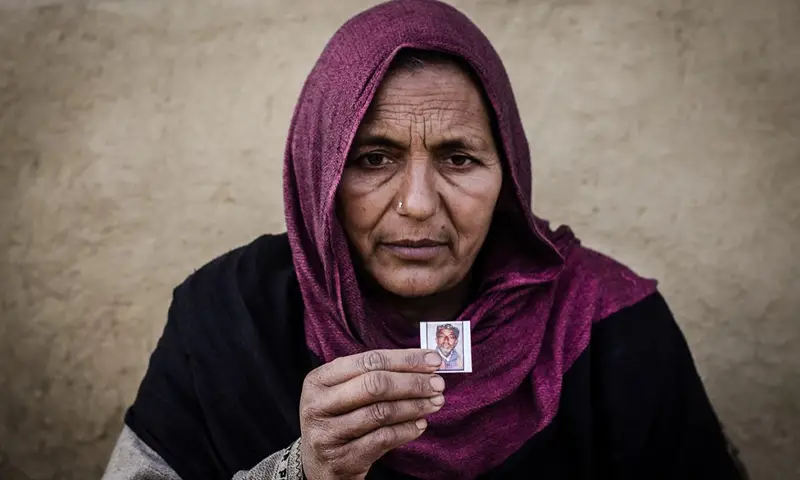In Kashmir, the fishermen row their bright, jewel-colored shikaras in lakes ensconced by the ice-tipped peaks of the Himalayas. In the summer, the mountains are cloaked in hues of pink and green; in the winter, they are shrouded by wispy grey plumes of low-hanging clouds. Before the Indian film industry started shooting “exotic” scenes in European and the Middle Eastern locales, many of Bollywood’s greatest love song-and-dance sequences took place in Kashmir, and many directors hailed the place as “the Switzerland of India.”
The similarities between Switzerland and Kashmir, though, stop with the mountains. Where the former has long prided itself on its history of political neutrality, the latter has been engaged in an almost century-long political struggle for liberation with some of Asia’s most powerful players: China, Pakistan and, above all, India. Both militant Kashmiri liberation forces and the Indian army have committed a series of war crimes against the people of the region since the beginning of the Kashmiri Insurgency in 1989. Rape, terrorism and ethnic cleansing are all grotesque, stomach-churning facets of the bloody conflict, but perhaps none are so mysterious as the enforced disappearances of over eight-thousand Kashmiris by the Indian army. The Indian government claims ignorance when it comes to the problem of enforced disappearances; the families of the disappeared, however, want answers.
Kashmir’s history is as Byzantine as they come. The picturesque mountain state, a nexus conjoining Central, South and East Asia, has been the fascination of empires and colonizers for thousands of years. The Greeks, the Indians, the Huns, the Mughals and the British all established footholds in Kashmir, and one can find the hybridization of cultures in Kashmir everywhere from the architecture to the faces of everyday Kashmiris. The region’s religious makeup is equally complex: Muslims, Hindus, Buddhists, Sikhs and Christians live, or rather once lived, side-by-side.
Kashmir’s modern troubles began with the end of the British Raj and the partitioning of India in 1947, where both India and the newly formed Islamic Republic of Pakistan claimed possession of the region. Pakistan asserted that because much of the population was Muslim, it was rightfully theirs; India maintained that the region’s Hindu king marked it for Indian suzerainty. For what it was worth, the king of Kashmir, Maharaja Hari Singh, wished for his princely state to remain neutral in the face of burgeoning Indo-Pakistani tensions, but ultimately acceded control of Kashmir to the Indian government after a rebellion. India and Pakistan went on to fight two wars for control of Kashmir, in 1947 and 1965. Today, Kashmir is divided three ways between China, India and Pakistan. As one can imagine, the Kashmiri people are none too pleased.
Several militant Kashmiri groups launched an insurgency against the Indian government in the late 80s and have continued their attacks against Indian state forces since. India’s response has been one of totalizing, brutal force; a force that derives its powers, ironically enough, from an old colonial provision enacted by the British to quell India’s nascent independence movement: The Armed Forces (Special Powers) Act, or AFSPA. The Act grants the government the power to arrest anyone suspected of seditious behavior with impunity, even if there is no evidence to prove that individual’s guilt whatsoever. It is under the auspices of AFSP that the Indian army has been able to enforce disappearance on scores of Kashmiris.
While the Indian government denies that it disappears Kashmiris, those who have had their loved ones disappeared are working hard to get answers. Parents and wives of the disappeared have organized several advocacy groups calling for the return of their kidnapped family members. The most prominent of the groups being the Association of the Parents of Disappeared Persons (APDP), founded by Parveena Ahanger, whose son was disappeared in 1995. APDP coordinates protests, calls for policy change, and raises international consciousness for disappeared persons around the world, but, above all, it seeks to ascertain where exactly the disappeared went.

In 2005, the Association of Parents of Disappeared Persons was nominated for the Nobel Peace Prize for its efforts. There is no doubt that the thought of the disappeared being alive or not looms large in their families’ consciousness, and though there have been no concrete findings, several mass graves containing thousands of bodies have been uncovered all over Kashmir. In December 2009, a mass grave concealing two thousand and nine hundred bodies was unearthed in Northern Kashmir. Of those bodies, nearly 90 percent of them were unidentified. What can be done to deliver justice to the Kashmiri people when the Indian army and government wash their hands of all responsibility?
As is the case with atrocities committed by countries around the world, international pressure is a viable option. Condemning the Indian government for its actions in Kashmir could be effective to an extent, as the nation has a vested interest in presenting a polished version of itself to the international community. However, India’s status as a burgeoning superpower complicates the matter even further—many countries seek to warm up to India to access the greater South Asian sphere, and addressing the Kashmir conflict would put a wrench in those plans. Drawing attention to war crimes in Kashmir, too, might set up what many countries who commit human rights violations themselves would consider a dangerous precedent that would expose crimes they, like the Indian government, wish to hide.
In the end, it seems the burden of bettering the lives of the people of Kashmir falls on the shoulders of Kashmiri civilians themselves. Organizations such as APDP offer an opportunity for change to occur organically through grassroots channels, but the subaltern can only further their condition so far on their own. There is hope, though. India and Pakistan have been edging towards a precarious peace and tensions in Kashmir have noticeably lessened. Wherever the political scene is headed, the disappeared are still missing and the families affected still yearn for their return.

















